Over time, we often hear stories about tooth decay causing harm to oral health by living in the oral cavity and hollowing out teeth. However, does tooth decay really exist in reality? If so, What is tooth decay and what are the characteristics of tooth decay? Don’t worry, because Bedental Dental Clinic will provide you with complete information to answer all your questions through the following article!
What is tooth decay?
Tooth decay is a common issue in the field of dentistry, especially in children and adults. It refers to the condition of loss of hard tissue or damage to hard tissue on teeth due to the influence of bacteria accumulating in dental plaque, creating small holes on the tooth surface.
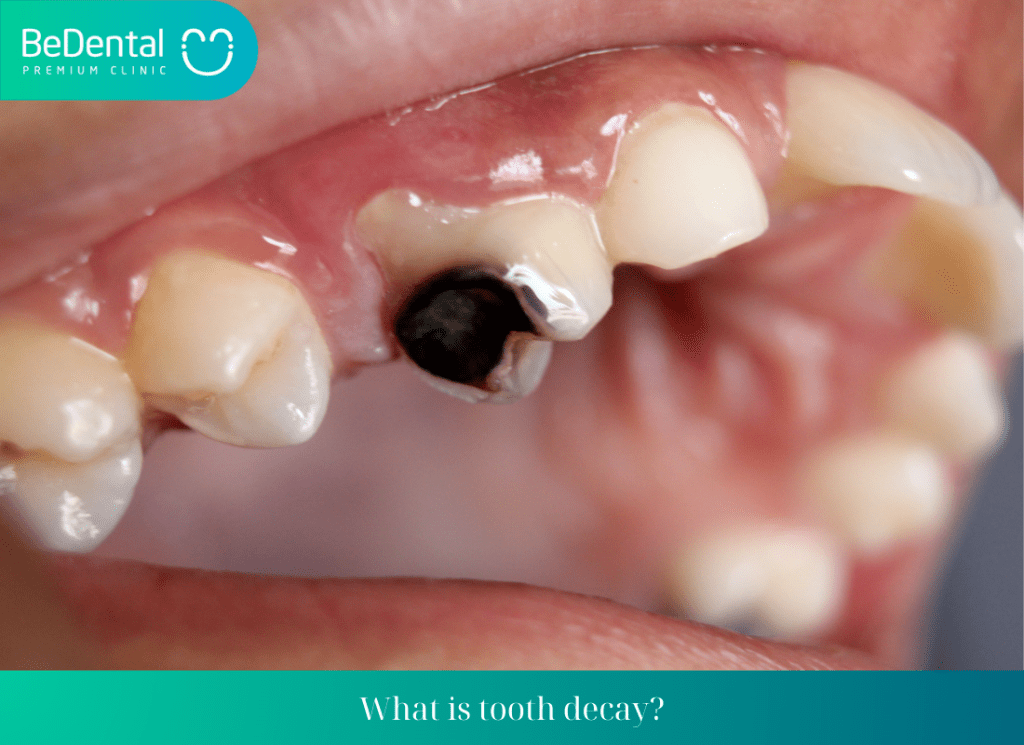
There are three main types of tooth decay, including decay on the tooth body, caused by bacteria and the most common type; decay on the tooth root, which usually occurs when the gums of the elderly become loose and part of the tooth root is exposed, creating favorable conditions for bacterial attack; along with secondary tooth decay, appearing in the area around fillings or crowns.
If not cared for and treated promptly, tooth decay can cause serious harm, from damaging the teeth to affecting the small nerve fibers in the center of the tooth, leading to pain and tooth pressure.
Which bacteria cause tooth decay?
According to many studies, Streptococcus mutans is identified as the main bacteria causing tooth decay.
This bacteria interacts with carbohydrates and produces acid, lowering the pH below 5, causing demineralization on the tooth surface and loss of tooth enamel on hard tissues. Therefore, the small black holes on the teeth, known as tooth decay, are formed.
In addition, inadequate oral hygiene and excessive consumption of sugary foods also contribute to the formation of plaque, providing favorable conditions for Streptococcus mutans bacteria to develop.
Is there such a thing as tooth decay?
Is there such a thing as tooth decay? “Tooth decay” is a term often used to refer to the erosion of tooth enamel, not a living organism. Tooth enamel is the outer covering of the tooth and can erode under the action of acid from bacteria in the mouth, especially when certain fruits and grains are consumed.
When tooth enamel begins to erode, it creates a hole on the tooth surface called “tooth decay.” Bacteria continue to destroy the enamel and can penetrate deep into the tooth root, causing pain and infection. Therefore, tooth decay is not a worm; it is a condition of erosion caused by bacteria and other factors.
Legendary images of tooth decay
Many people believe that there are white decay worms, about 2-4mm long, crawling in the gaps between teeth and hollowing out the teeth day and night to create cavities in the teeth.

These legendary worms are passed on by word of mouth by patients who have been caught by the medicine transmitted by the master only.
The images of the wriggling worms being caught out, the patients seeing it with their own eyes make everyone believe that worms residing in the teeth, like worms residing in tree leaves, are real. And the story keeps spreading, making many adults and children alike believe that the tooth decay worms in the legend are real.
How to catch tooth decay worms
How to catch tooth decay worms? Since the tooth decay worms in the legend are real, the way to catch them must also follow the legend. Specifically:
See more: Should you get braces on installment payments or not?
Catch the tooth decay worms with basil leaves
Surely you have heard the formula for catching tooth decay worms by crushing basil leaves to extract the juice. Then, apply that juice directly to the affected tooth, and then the white strips will be removed (according to the master, that is the tooth decay worm).
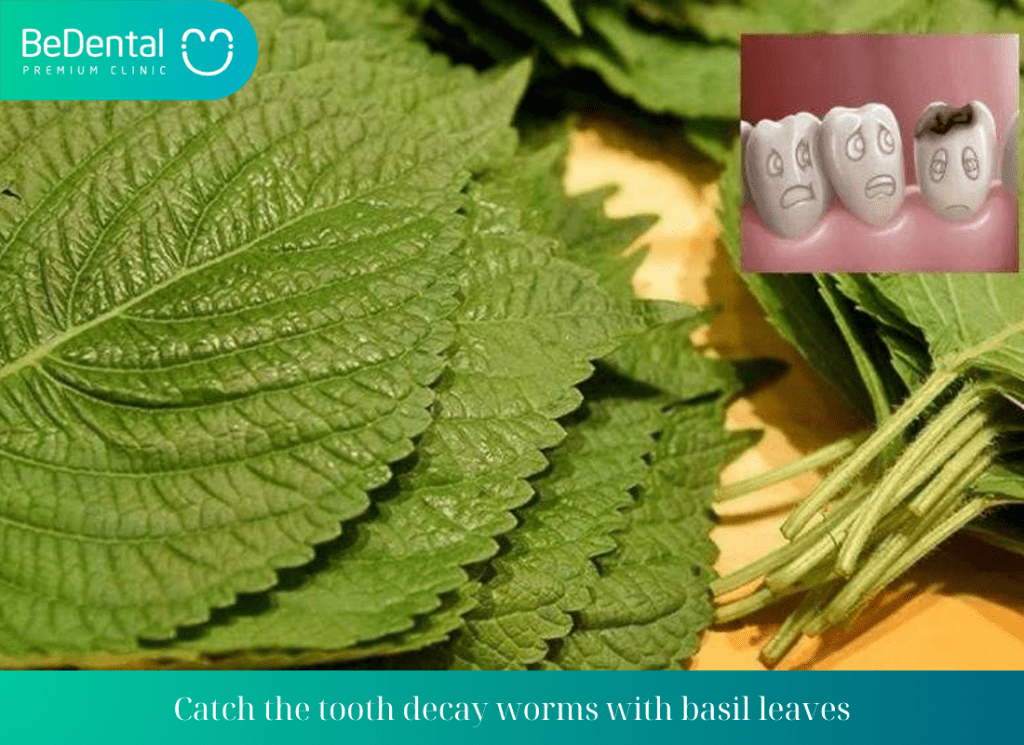
The truth about catching tooth decay worms with basil leaves
The story of catching tooth decay worms with basil leaves may sound far-fetched, but many people believe and apply it. However, the truth behind the white strips extracted when basil leaf juice is applied has been explained by experts.
Those white strips are actually fibrin fibers generated by the reaction of the essential oils in basil leaves when combined with eye secretions, rather than tooth decay worms. Experts advise people not to apply basil leaf juice to the eyes as it can be dangerous, cause eye infections, or decrease visual acuity.
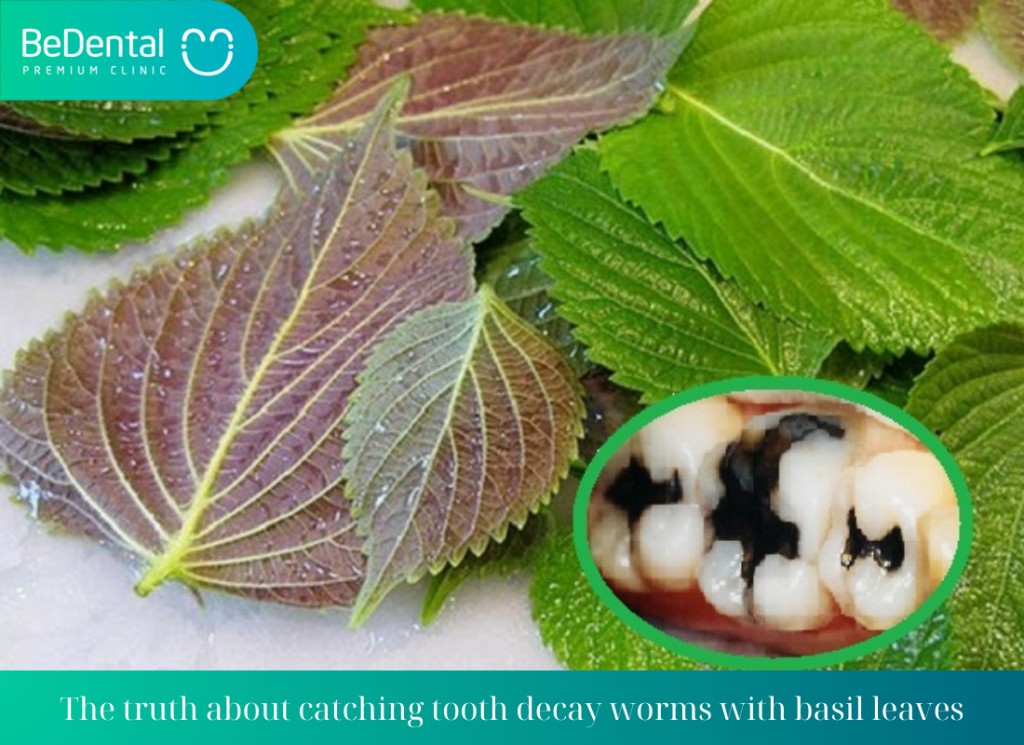
Catching tooth decay worms by smoking peppercorns
Another legendary method of catching tooth decay worms is by smoking peppercorns.
The process is as follows: Heat a brick and sprinkle black peppercorns on top, then cover it with a funnel on the surface of the heated brick with the peppercorns. The person with tooth decay will bite into the tube of the funnel. The smoke from the peppercorns entering the mouth will make the white tooth decay worms fall out.
See more: Are dental crowns durable?
The truth about catching tooth decay worms by smoking
Regarding the strange method of catching tooth decay worms by smoking used by traditional healers, experts have stated that the white strips that fall out are actually the insides of peppercorns that split when heated and fall into the mouth, not tooth decay worms as claimed by the traditional healers.
Directly smoking like this poses many risks such as carbon monoxide poisoning, lung inflammation, and in many cases, death if not promptly treated.
Medical professionals advise that these are tricks used by fake healers, so people need to be vigilant and avoid following them to prevent danger.
Scientific treatment of tooth decay
Dental experts explain: In reality, tooth decay does not have a specific form as rumored; they are a type of bacteria in the oral cavity called Streptococcus mutans. These bacteria ferment carbohydrates to produce acid that erodes tooth enamel, leading to tooth decay.
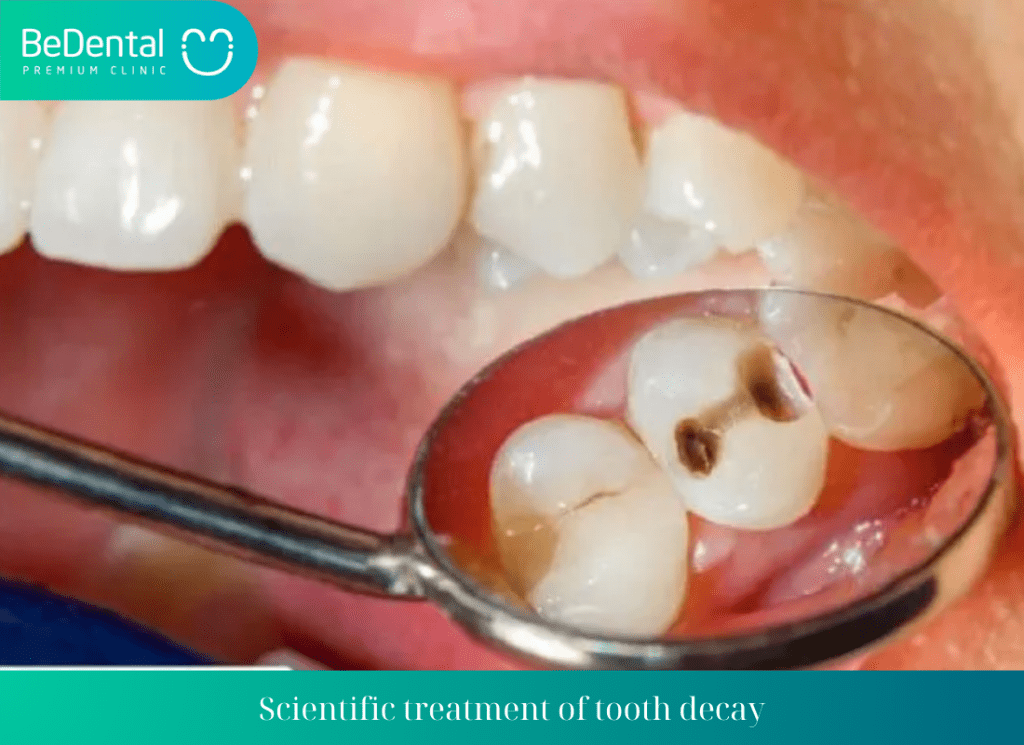
Tooth decay requires timely intervention for treatment; otherwise, if left untreated, it can lead to deep decay, damaging the tooth pulp and causing other dangerous conditions.
When experiencing tooth decay, patients should not attempt self-treatment without proper medical knowledge but should seek advice and treatment from reputable dental clinics.
Currently, tooth decay is treated using the following methods:
- Fluoride treatment: This method is applied for cases of mild tooth decay in the early stages. The dentist will apply fluoride to the tooth surface similar to a gel.
- Dental filling: Dental fillings are used for cases where there are cavities in the teeth but have not affected the tooth pulp. This method is widely used today due to its quick treatment time, minimal impact on tooth strength, and reasonable cost.
- Dental crowns: If a tooth has a large cavity that cannot be resolved with fillings, dental crowns are the most suitable method. The ceramic crown covers the tooth, providing protection like a natural tooth and causing no discomfort.
- Root canal treatment: Tooth decay affecting the pulp can cause inflammation and affect daily activities such as pain, sensitivity when eating, requiring root canal treatment to remove the inflamed pulp. After removing the pulp, the tooth is sealed to prevent bacterial infection.
See more: Signs of exposed porcelain teeth
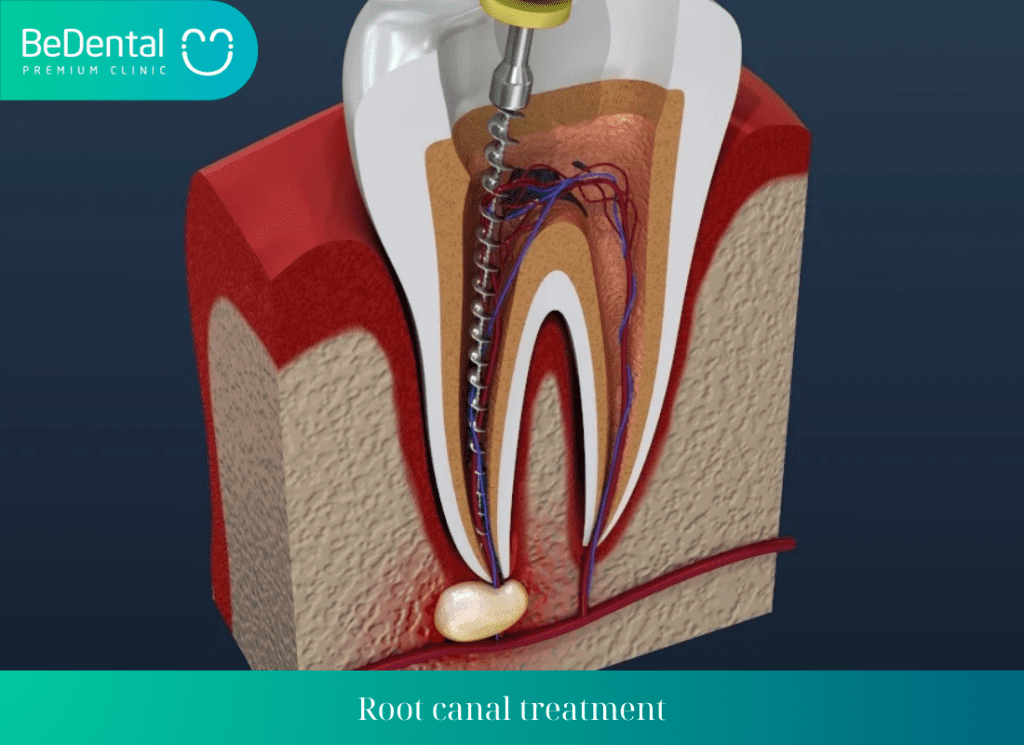
- Extracting teeth: In cases where tooth decay is severe, causing destruction of the tooth structure, tooth extraction is necessary to prevent and completely remove the tooth decay.
Things to consider when dealing with tooth decay
When facing tooth decay, there are some important things to consider and implement to maintain oral health. Here are some key points:
- Regular dental check-ups: Treating tooth decay should be done as early as possible. Maintain a habit of regular dental check-ups to assess the condition of your teeth and receive necessary treatment methods.
- Proper dental care: Brush your teeth at least twice a day with fluoride toothpaste and use dental floss to remove plaque between teeth.
- Control your diet: Reduce consumption of sugary foods and drinks, especially between meals. Avoid sugary foods and items that can damage teeth.
- Use fluoride mouthwash: Fluoride mouthwash can help maintain tooth enamel health and prevent new tooth decay formation.
- Choose fluoride toothpaste: Select fluoride toothpaste to protect tooth enamel and prevent the progression of tooth decay.
- Limit harmful habits for teeth: Avoid habits like biting on sweet items, brushing teeth too hard, and refrain from smoking.
- Follow dental treatment recommendations: If advised to undergo treatments like fillings, dental crowns, or other procedures, follow the schedule and guidance provided by your dentist.
Protecting teeth from tooth decay
Tooth decay significantly impacts daily life and can cause intense pain for patients. Ways to protect teeth from tooth decay include:
- Regularly brush your teeth twice a day.
- Rinse with salt water and use dental floss.
- Limit consumption of sugary, starchy foods, and carbonated drinks.
- Eat plenty of fruits and vegetables.
- Visit the dentist for check-ups every 6 months.
This article has helped explain the truth behind the tooth decay worms myth and provided scientific treatment and protection methods for teeth. We hope this article is helpful for you.
If you have any questions or need advice on your current dental condition, you can contact the team of dentists at Bedental for detailed and caring guidance.
Tư vấn chuyên môn bài viết:
BÁC SĨ VÕ HUY VI





